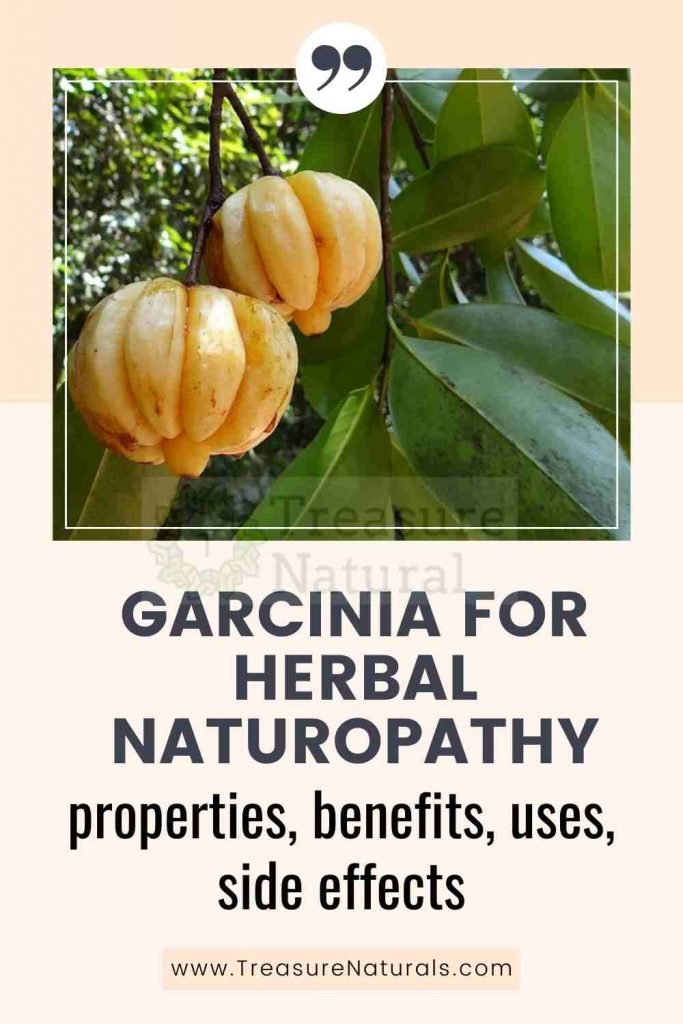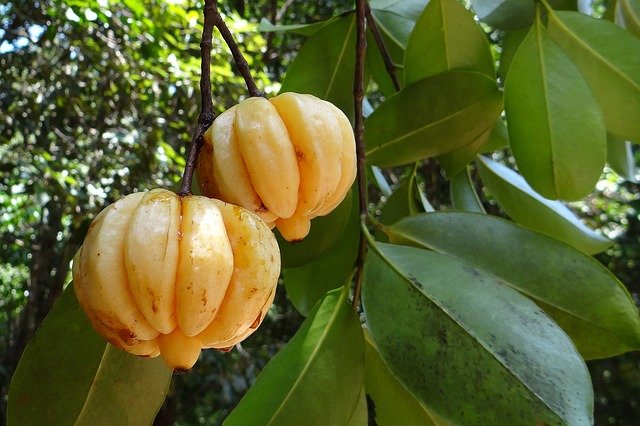
Garcinia is used in supplement form to reduce hunger and facilitate weight loss in weight loss diets. Here are its properties and benefits.
Garcinia ( Garcinia cambogia ) is a remedy used in supplements to facilitate and speed up weight loss in slimming diets.
What is Garcinia Cambogia?
Garcinia cambogia is a small spontaneous shrub of the Guttiferae family. The extracts obtained from the fruit of Garcinia cambogia are traditionally used for:
- Increase the sense of satiety;
- facilitate weight loss;
- to treat intestinal disorders;
- to relieve pain.
Property of garcinia
Garcinia cambogia boasts properties:
- Astringents;
- anesthetics;
- anti-inflammatory;
- satiating;
- slimming.
The properties of garcinia are given by the presence of numerous compounds including, in particular, hydroxycitric acid. Garcinia also contains:
- Flavonoids ;
- pectins;
- polysaccharides;
- citric acid;
- vitamins ;
- minerals .
What is garcinia used for?
Garcinia is mainly used to reduce the sense of hunger, thus decreasing food intake and facilitating the success of low-calorie diets to lose weight.
Furthermore, garcinia seems to be able to inhibit the formation of new fats, favoring the loss of fat mass, that is, of adipose tissue.
In herbal medicine, the pericarp of the fruit is used from garcinia.
Benefits of garcinia
The benefits and therapeutic properties of garcinia mainly depend on the presence of hydroxycitric acid, a substance that is particularly rare in nature.
This compound appears to act in different ways on the body, leading to a reduction in the synthesis of cholesterol and fatty acids and to an increase in the oxidation of fats.
Garcinia extracts would then be able to increase serotonin levels and activate the satiety signal, extinguishing hunger.
The action of hydroxycitric acid could ultimately help regulate thyroid hormones and bring benefits in case of hypothyroidism. In any case, as regards the interaction between garcinia cambogia and thyroid gland, it is good to seek the advice of your doctor.
How to take Garcinia cambogia
Generally this remedy is administered in the form of a dietary supplement in capsules or tablets.
Garcinia supplements are titrated in hydroxycitric acid (HCA) and are taken according to the manufacturer’s directions.
For example, a garcinia supplement containing 1000 mg of extract titrated to 60% in HCA is taken at a dosage of two tablets a day to be administered at least thirty minutes before main meals.
Garcinia supplements are sold in herbal medicine or pharmacy, with names such as: “garcinia urto”, ” garcinia forte ” or ” garcinia slim “.
As these are recommended supplements for weight loss, in addition to garcinia, they may contain other ” fat-burning ” plant extracts such as caffeine.
Does Garcinia Cambogia make you lose weight?
We have seen that garcinia supplements are mainly used for weight loss, but does garcinia cambogia really work? The answer is not so simple because the results on clinical studies carried out to investigate the effectiveness of garcinia are discordant.
In theory, garcinia could help, but it should be emphasized that to lose weight it is above all necessary to reduce caloric intake and increase energy expenditure. No supplement is able to guarantee weight loss if you do not intervene on diet and lifestyle.
How to use
Internal use : 200-3000 mg per day of dry extract in the form of tablets or capsules in two doses before meals, for at least 8-12 weeks.
Contraindications of garcinia
Garcinia has no particular contraindications and collateral effects. Despite this, it is advisable to consult your doctor before taking garcinia cambogia while breastfeeding and to avoid administration in pregnancy and children. Even in case of pathologies or if you are following therapies, it is good to ask for the opinion of the doctor, herbalist or pharmacist.
Description of the plant

The garcinia plant is a small evergreen shrub of modest size with opposite leaves and solitary flowers. The fruits of the garcinia are yellowish and similar to pumpkins, have a salty and astringent taste and contain large seeds.
Habitat of the garcinia
Native to the forests of Southeast Asia and the tropical climate areas of southern India, Indochina, Cambodia and the Philippine Islands and Vietnam.
Background
Garcinia produces an orange-brown rubber resin that was once used as a powdered pigment. Some oleoresins have been exploited for their physico-chemical (insulating, adhesive, protective) or medicinal properties. The pericarp of the fruit has been used for centuries by Asian populations who considered it the best natural fat burner, due to its ability to inhibit the absorption and accumulation of adipose tissue.






